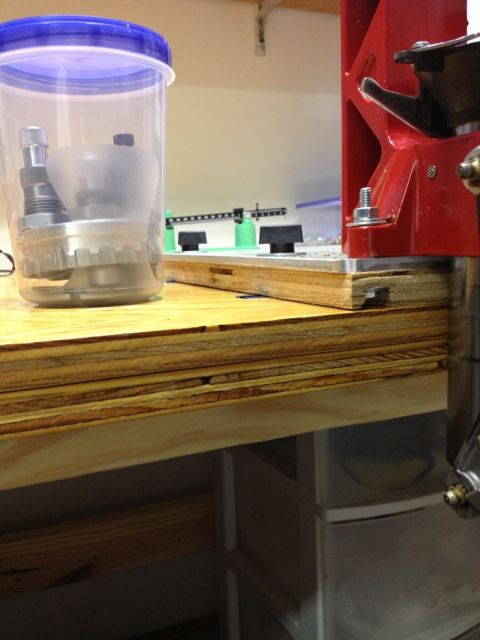AndyC wrote:You can brace it in the press area underneath or on top with thin steel plates to help spread the load, if needed...
I think I went with the belt and suspenders approach, but the end result is my press is rock solid.
One frequent question that newbie Lee Loadmaster users have is problem-solving occasional flipped or crushed primers. I am 100% convinced that 99% of primer or feeding problems (at least on Lee presses) are indirectly caused by press movement during operation due to the mount not being strong enough.
Anyway. my bench top is a double layer of 3/4 inch plywood mounted on a 2x4 frame. On top of that, the press is mounted on a 1/4 inch aluminum plate mounted on 3/4 inch plywood. The press and mount are affixed to the bench top by being bolted into T-track in the bench top. I went the T-Track approach because I can swap out my press and mount my other presses, my Star Lubesizer, a bench vise, or any other bench-mounted tools quickly and easily. For example, it takes about a minute and a half to swap out my Loadmaster and mount the Lubesizer. It gives me great flexibility with a limited amount of bench space.
Anyway, there are many ways to skin this cat; I am not trying to imply my way is the only way (or even the best way). I am simply trying to show you that your bench top should be much stronger and more solid than you may first realize.


This is what T-Track looks like:







